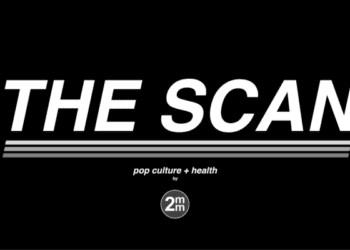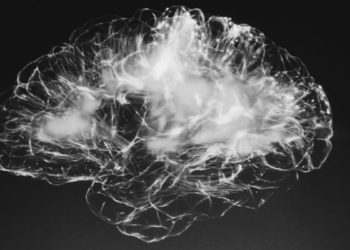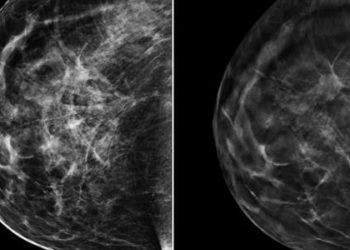Incidence of benign breast diseases and their association with age, family history of breast cancer, and hormonal activities
1. The incidence of fibroadenoma, epithelial proliferation with and without atypia, and fibrocystic changes peak in women in their 40s, while cysts peak at 50.
2. Hormone-altering activities impact risk for benign breast diseases, including regular menstruation, parity, younger age of first birth, breastfeeding, oral hormonal contraceptives; obesity specifically reduces the risk of BBDs, while family history of breast cancer and hormone replacement therapy increases the risk.
Evidence Rating Level: 2 (Good)
Study Rundown: Benign breast diseases (BBDs), including epithelial proliferation without atypia (EP) or epithelial proliferation with atypia (EPA), fibroadenoma, fibrocystic changes (FCCs), and cysts, are common throughout a woman’s lifetime. This study aimed to find the risk factors and incidence of BBDs in women enrolled in the Karolinska Mammography Project for Risk Prediction of Breast Cancer (KARMA) study in 4 Sweden hospitals. Participants received a mammography screening and completed health questionnaires. BBDs were classified based on pathology from breast biopsies. Analysis separated the participants into three groups: pre-menopausal (25 to 44 years), peri-menopausal (45 to 54 years), and post-menopausal (55 to 69 years). Fibroadenoma, EP, FCCs, EPA peaked in incidence in women’s 40s, while cysts peaked in post-menopause. Regular menstrual cycle was associated with increased risk of fibroadenoma early but not later in life. Nulliparity reduced the risk of EP, but increased the risk of cysts. Giving birth younger was associated with reduced risk of fibroadenoma while longer breastfeeding was associated with decreased risk of FCCs. Obesity reduced the risk of BBDs. Oral contraceptive use increased the risk of fibroadenoma and decreased that of EP, while hormone-replacement therapy increased the risk of EPA, FCCs, and cysts. A family history of breast cancer increased the risk of BBDs at all ages to varying degrees. A strength of this study is the quality, size, and duration of data from the KARMA database. One limitation of this study is that the database was created from women who attended mammographic screening, thus participants needed to actively engaged in their care. This might not reflect a complete population of women.. Additionally, menstrual cycles and BMI were only reported at recruitment, despite the fact that these can change with time, potentially contributing to error from misclassification of exposures. Finally, there was no corrections for multiple statistical tests, increasing the risk of false positives.
Click to read the study in JAMA Network Open
Relevant Reading: Breast cancer risk associated with benign breast disease: systematic review and meta-analysis
In-Depth [retrospective cohort]: The data for this study was retrieved from the KARMA population which is composed of women who performed mammographic screening, completed lifestyle and reproductive health questionnaires, and had breast biopsies classified by the International Classification of Diseases for Oncology standards. 5341 of the 61,617 women meeting eligibility criteria were diagnosed with BBD (8.67%). Fibroadenoma, EP, and FCCs were most common in women’s 40s (81, 55, and 140/100 000 person-years; fibroadenoma peaking at 46 at 90/100 000 person-years; EP peaking at 46 at 98/100 000 person-years; FCC peaking at 43 at 188/100 000 person-years) and decreased in the time post-menopause (24, 18, and 65/100 000 person-years). EPA and cysts were less common in youth and increased in frequency until a peak at 45 years (76/ 100 000 person-years) and 50 years (271/100 000 person-years), respectively. Regular menstruation cycling, compared to irregular, was associated with fibroadenoma in the pre-menopausal group (HR = 1.37; 95%CI = 1.02–1.84) but was protective in the post-menopausal group (HR = 0.36; 95%CI = 0.17–0.76). Regular cycles were associated with EPA in the post-menopausal group (HR = 8.00; 95%CI = 1.11–57.63). Age at menarche was not associated with changed risk of BBDs. Hormone-altering activities like parity and birth control were associated with BBDs at certain ages. Nulliparity, compared to multi-parity, in the pre-menopausal group was associated with a reduced risk of EP (HR = 0.62; 95%CI = 0.46–0.85), not previously found in other studies, but an increased risk of cysts (HR = 1.38; 95%CI = 1.03–1.85), which was 26% higher if uniparious (HR = 0.74; 95%CI = 0.57–0.95), suggesting multiple pregnancies might be needed for protective effects against cysts. While not found in previous studies, age of first birth and breastfeeding altered BBD risk. Age >32 years for first childbirth, compared to age <23 years, in the pre-menopausal group, was associated with reduced risk of fibroadenoma (HR = 0.59; 95%CI = 0.40–0.87). Breastfeeding for <3 months, compared to >12 months, in the peri-menopausal group, was associated with increased risk of FCCs (HR = 0.71; 95%CI = 0.52–0.96). BMI > 30 was associated in all groups with reduced risk of BBDs, but only marginally in the case of EP. Pre-menopausal aged women had increased risk of fibroadenoma if they currently (HR = 0.65; 95%CI = 0.47–0.90) or previously for ≥8 years (HR = 0.75; 95%CI = 0.58–0.97) used oral hormonal contraceptives. Pre-menopausal women having used oral contraceptives for <8 years had a reduced chance of EP (HR = 1.32; 95%CI = 1.00–1.72). Post-menopausal women having used hormone-replacement therapy had an increased risk of EPA (HR = 1.81; 95%CI = 1.07–3.07), FCCs (HR = 1.60; 95%CI = 1.03–2.48), and cysts (HR = 1.98; 95%CI = 1.40–2.81). Women who had a family history of breast cancer were at a higher risk of BBDs at all ages. Pre-menopausal women with a family history had nearly twice the risk of EPA (HR = 2.11; 95%CI = 1.48-3.00) and EP (HR = 1.90; 95%CI = 1.46-2.49), nearly 40% increased risk of FCC (HR = 1.39; 95%CI = 1.14-1.69) and cysts (HR = 1.41; 95%CI = 1.09-1.83), and 50% increased risk of fibroadenoma (HR = 1.51; 95%CI = 1.13-2.00). This risk of fibroadenoma was present in women of all age-groups with a family history of breast cancer and worse with age (perimenopausal: HR = 1.97; 95%CI = 1.44-2.70; postmenopausal: HR = 2.55; 95%CI = 1.20–5.42).
Image: PD
©2021 2 Minute Medicine, Inc. All rights reserved. No works may be reproduced without expressed written consent from 2 Minute Medicine, Inc. Inquire about licensing here. No article should be construed as medical advice and is not intended as such by the authors or by 2 Minute Medicine, Inc.







